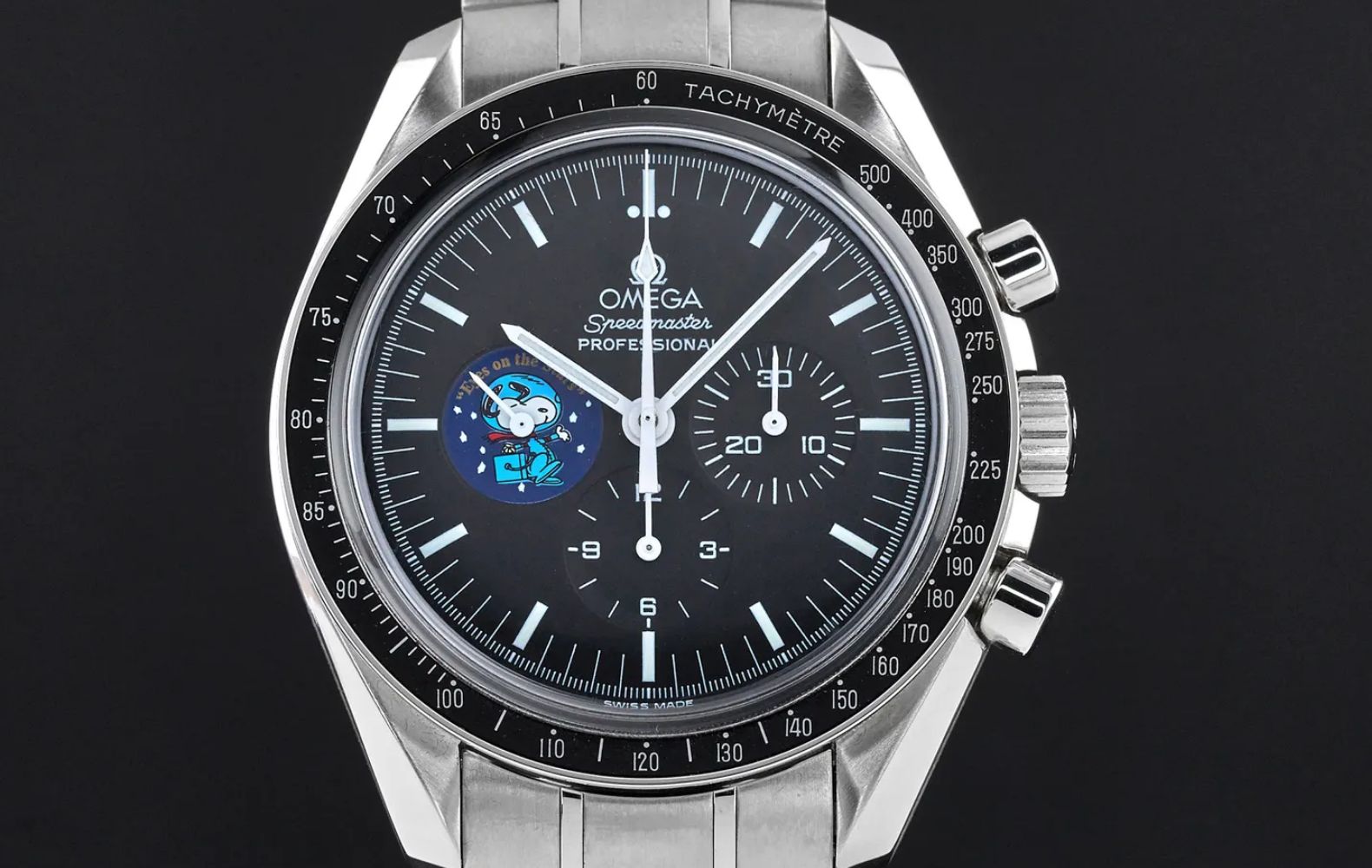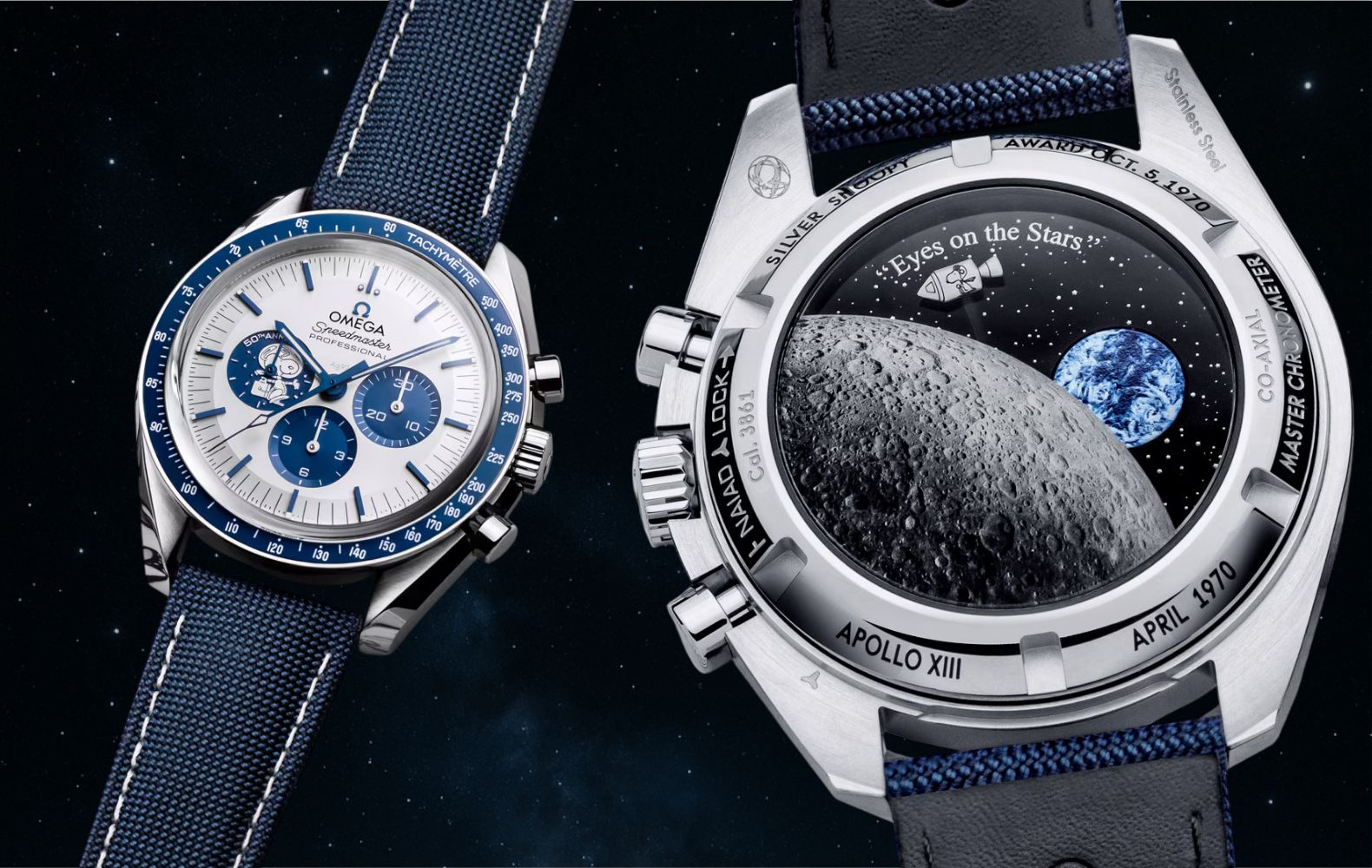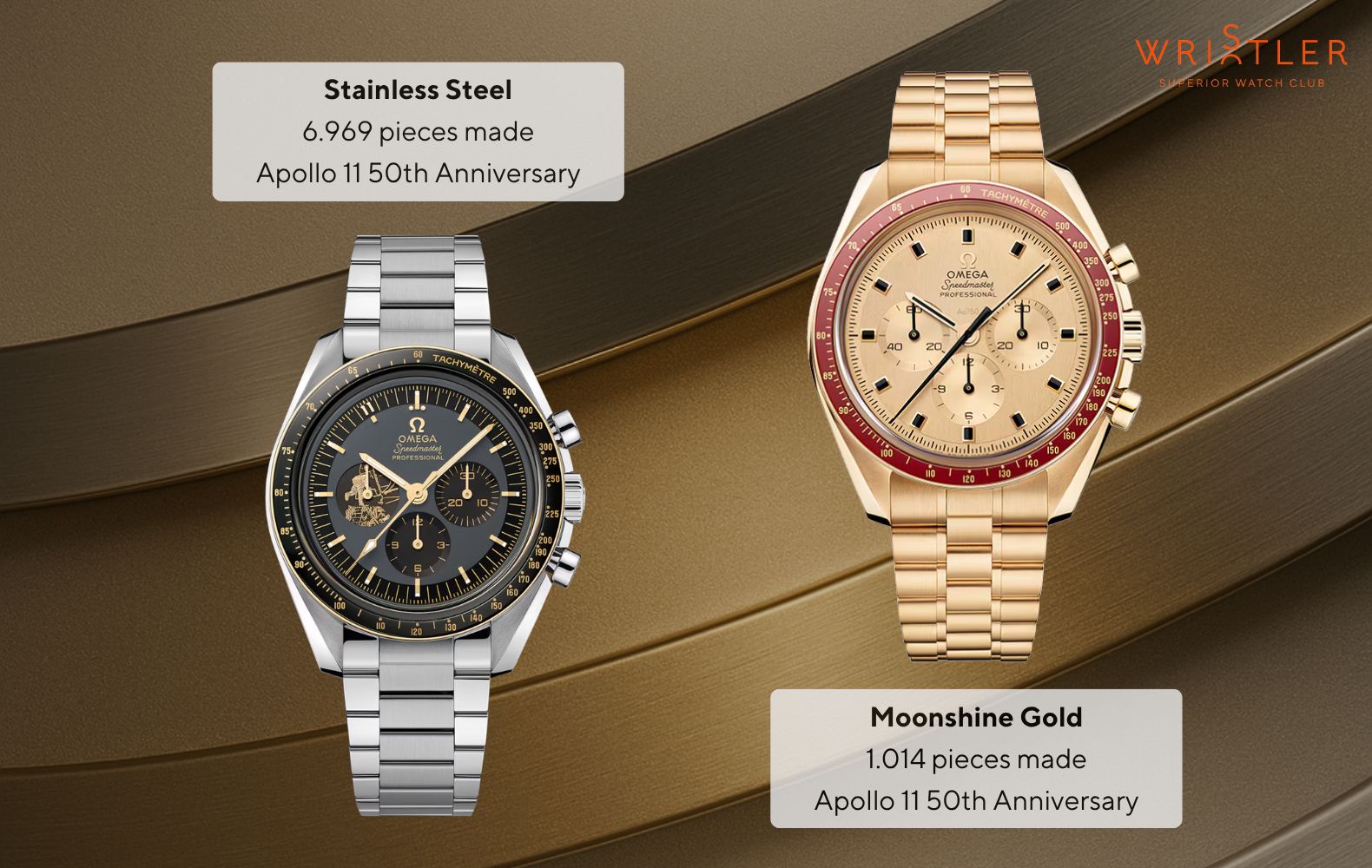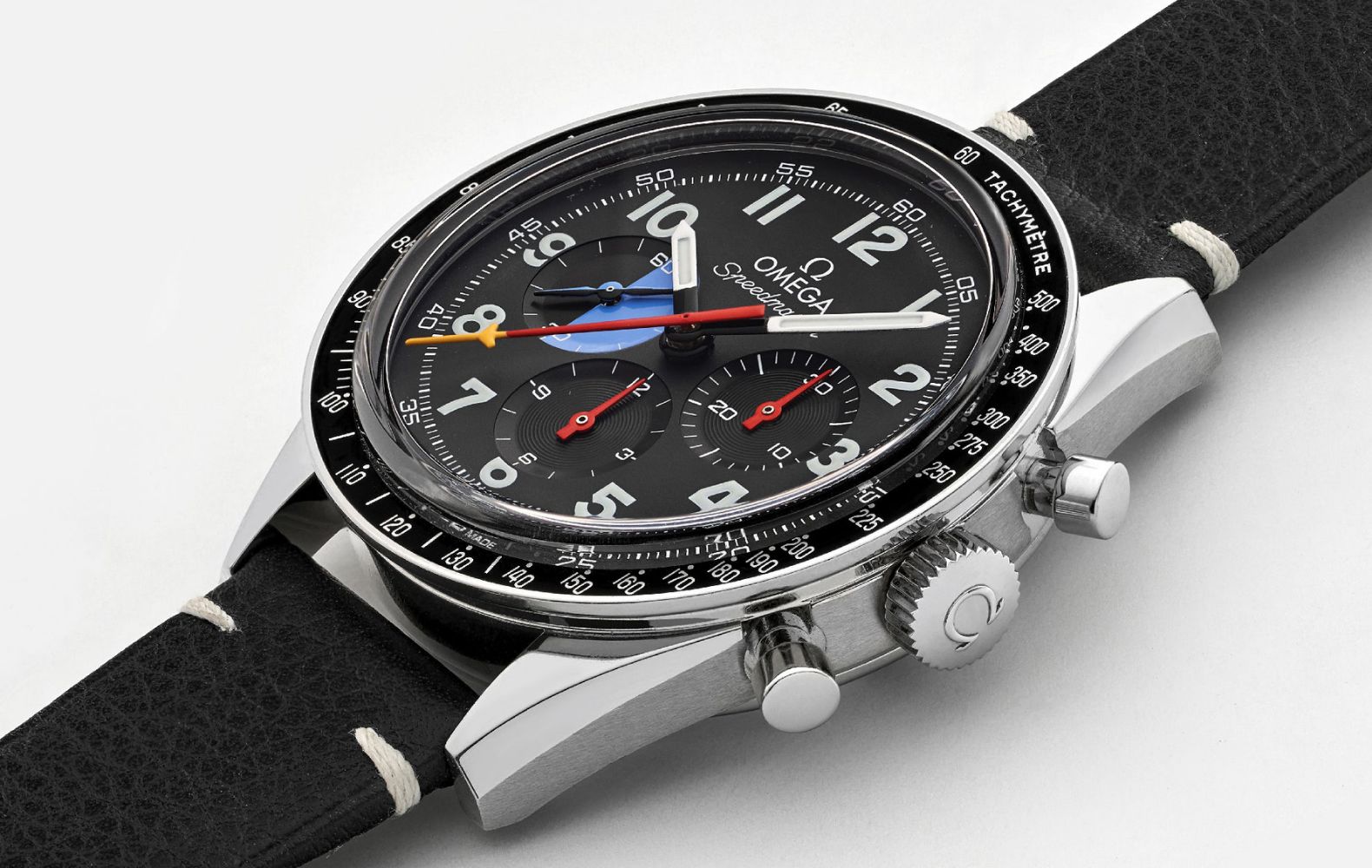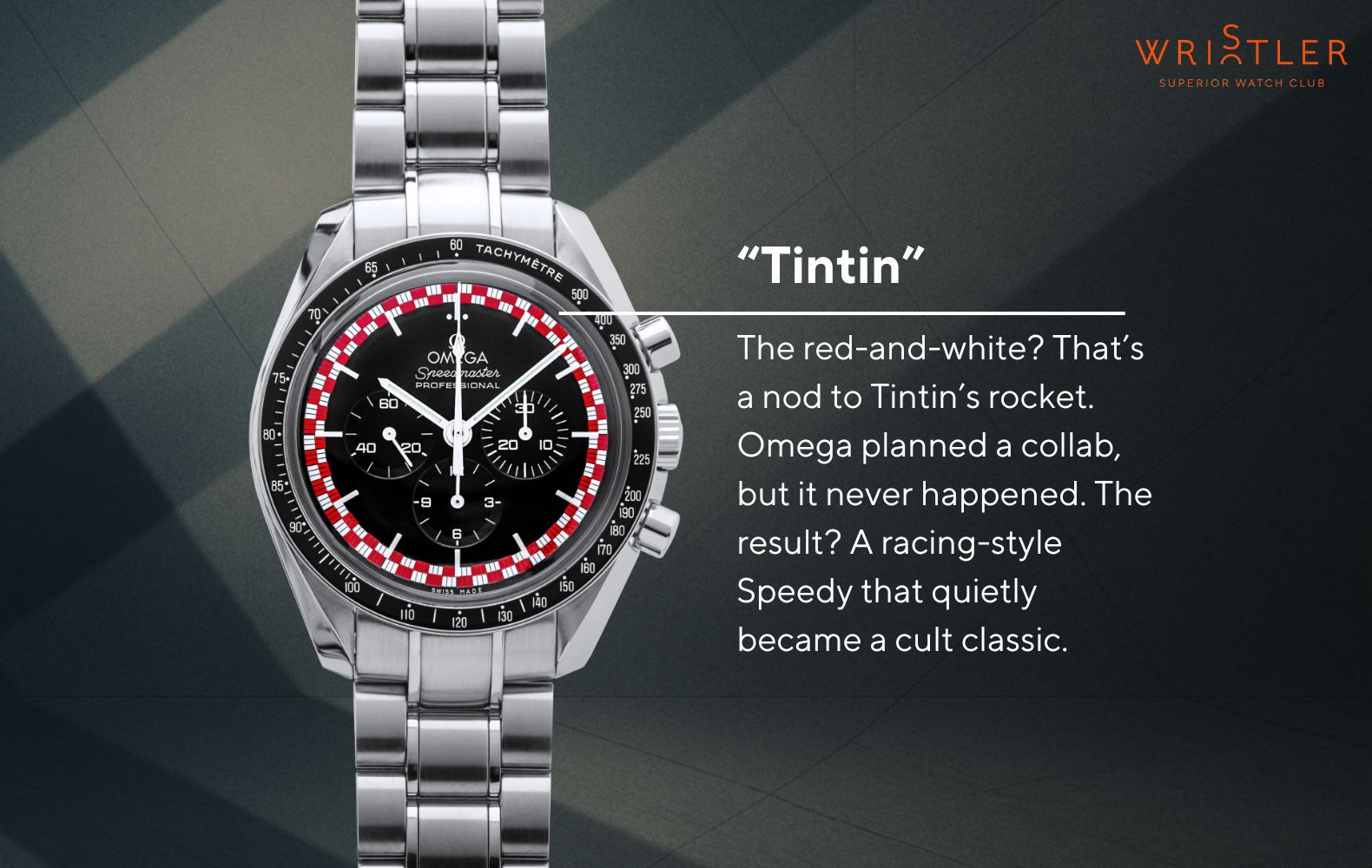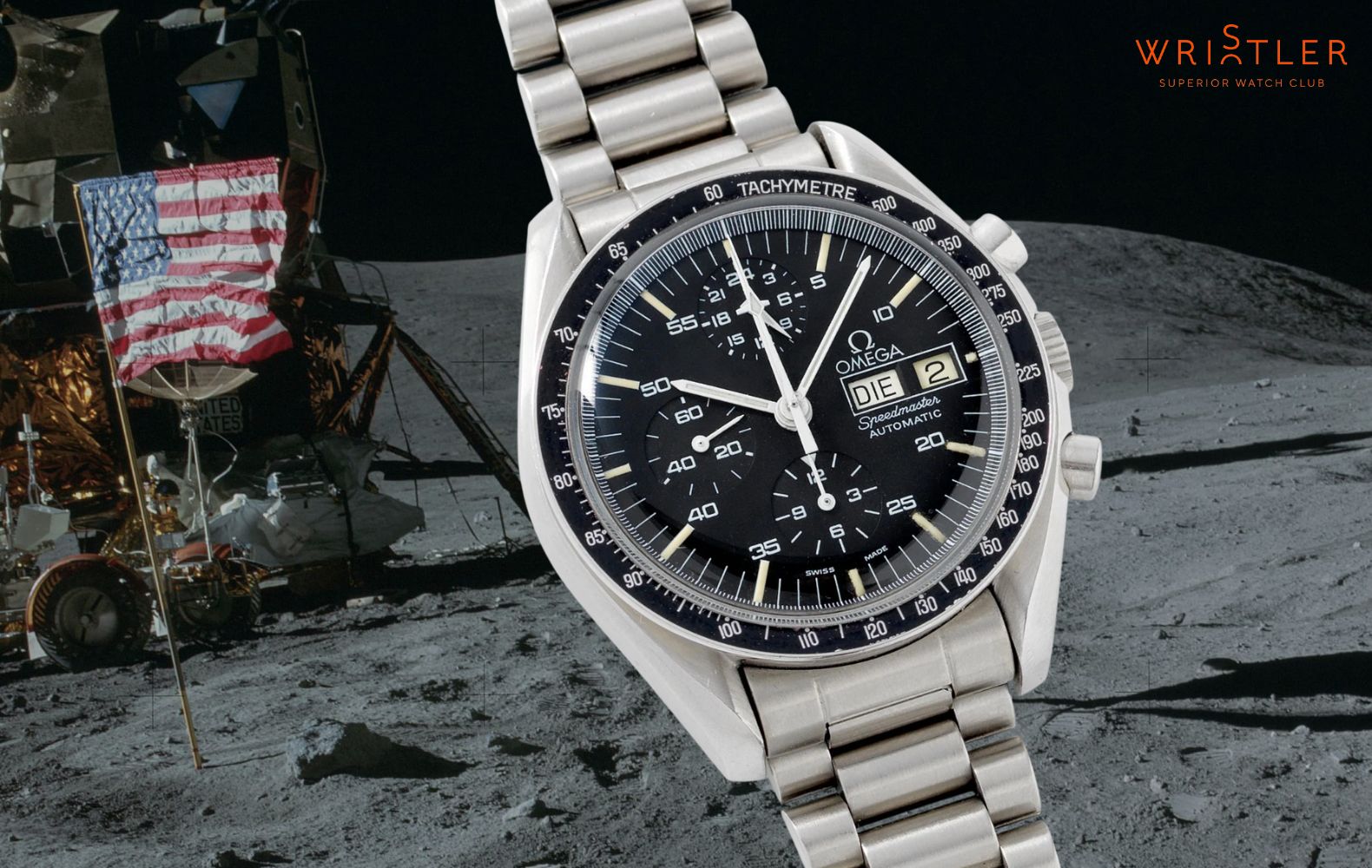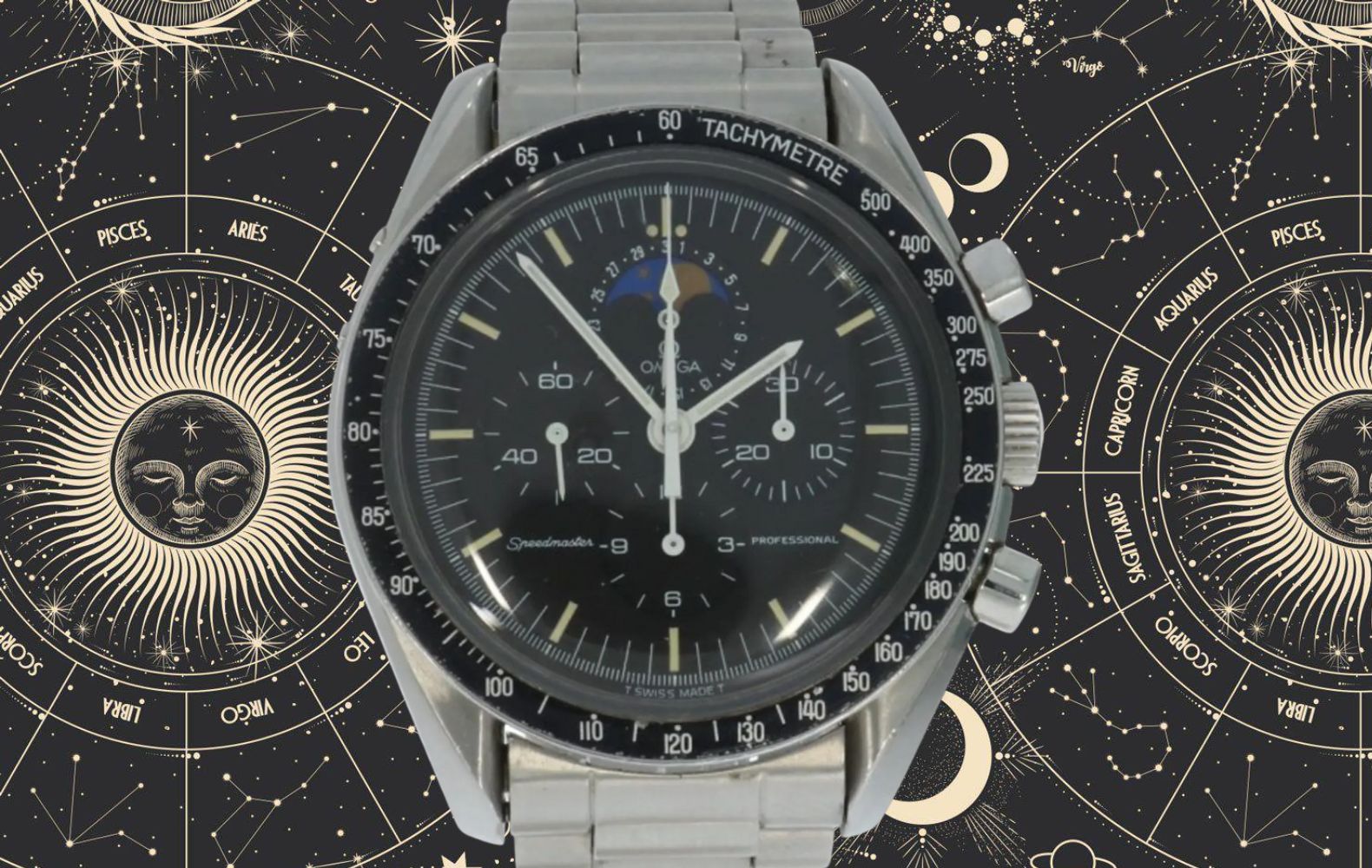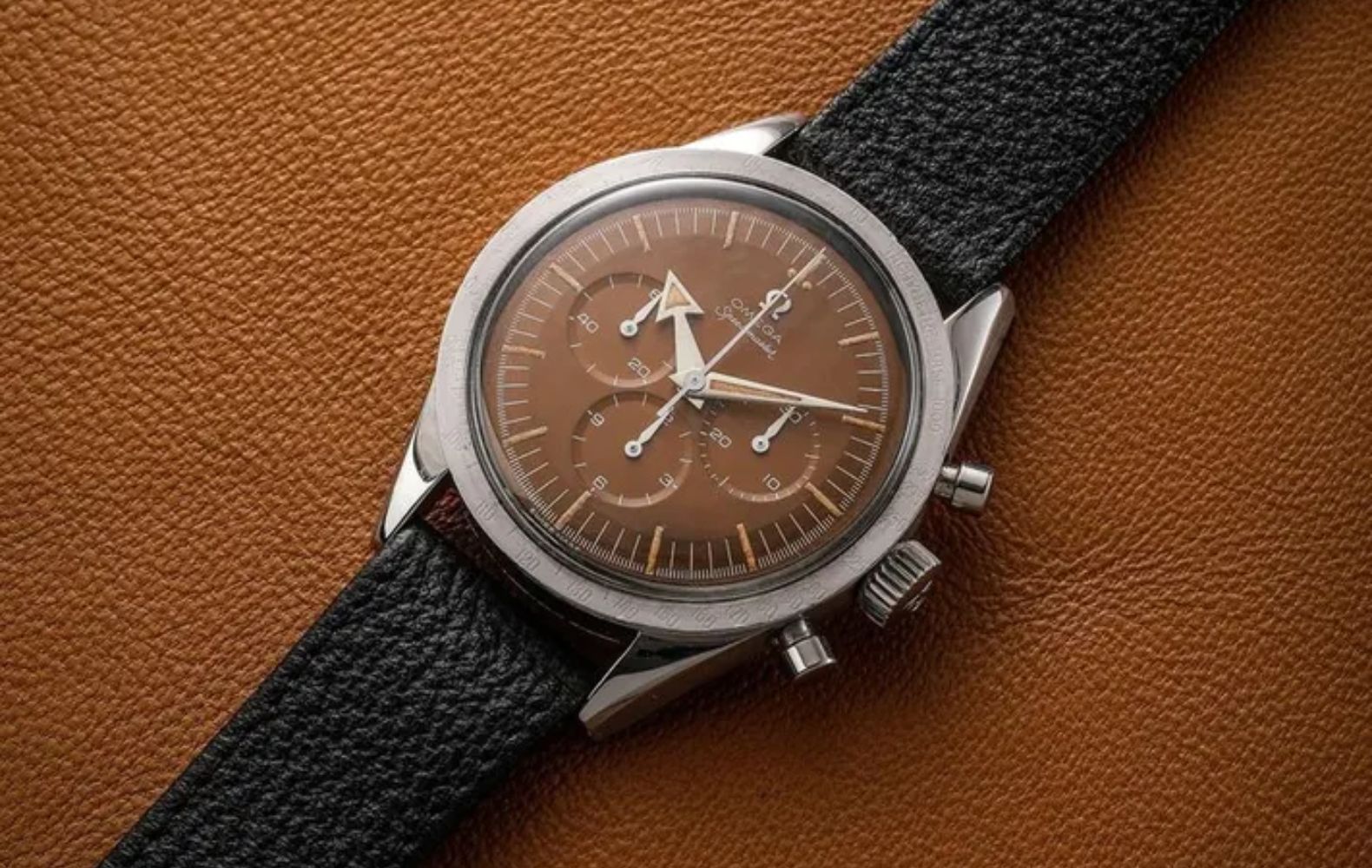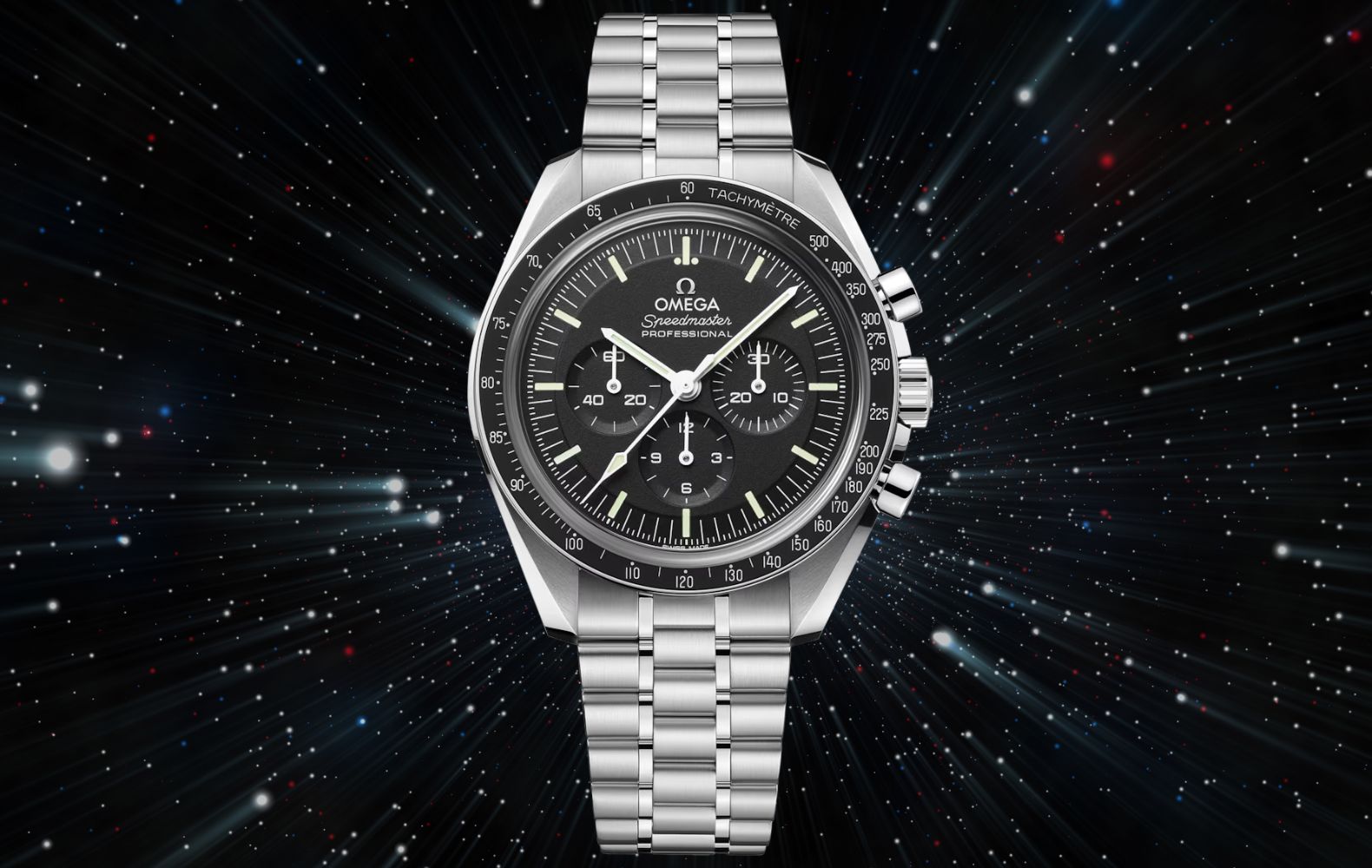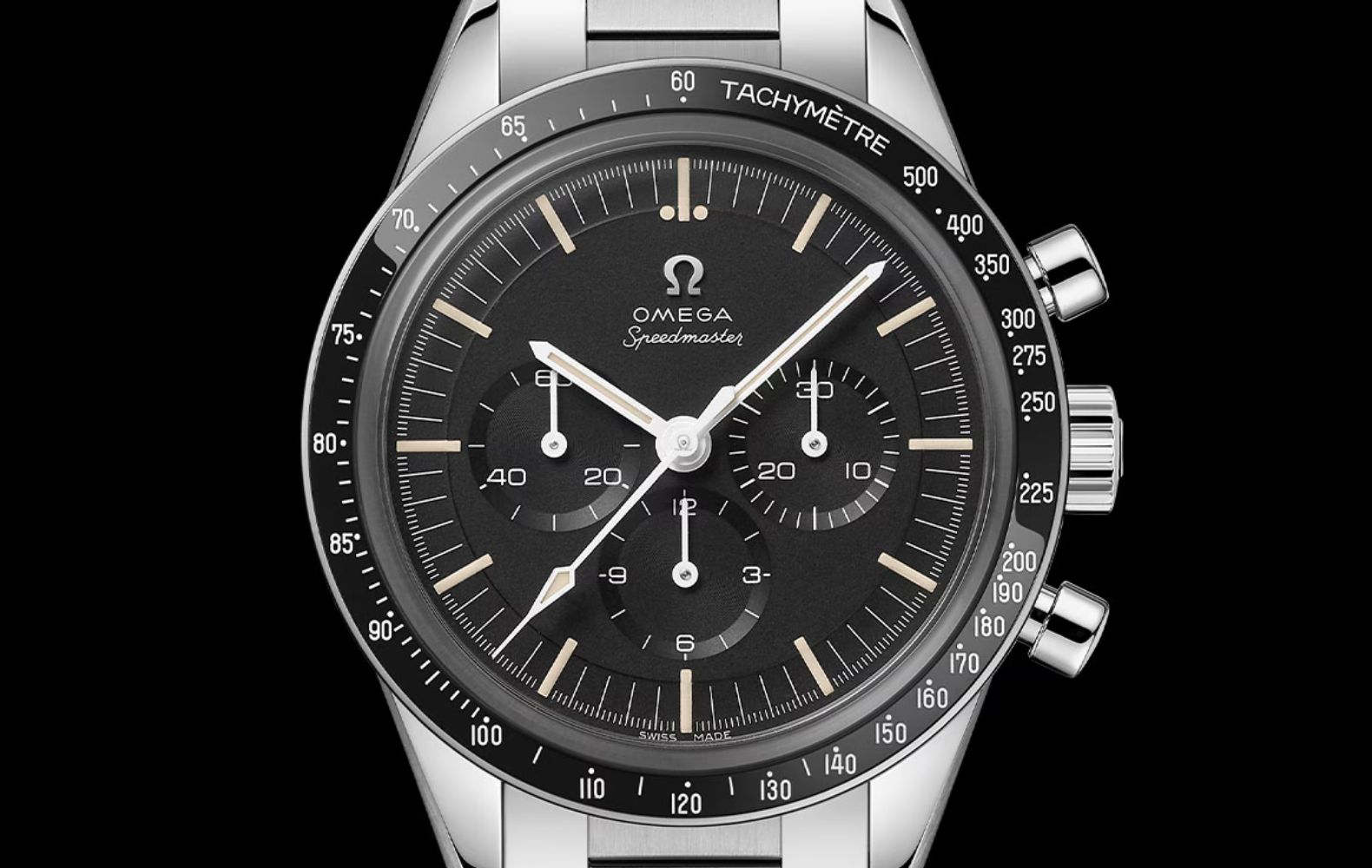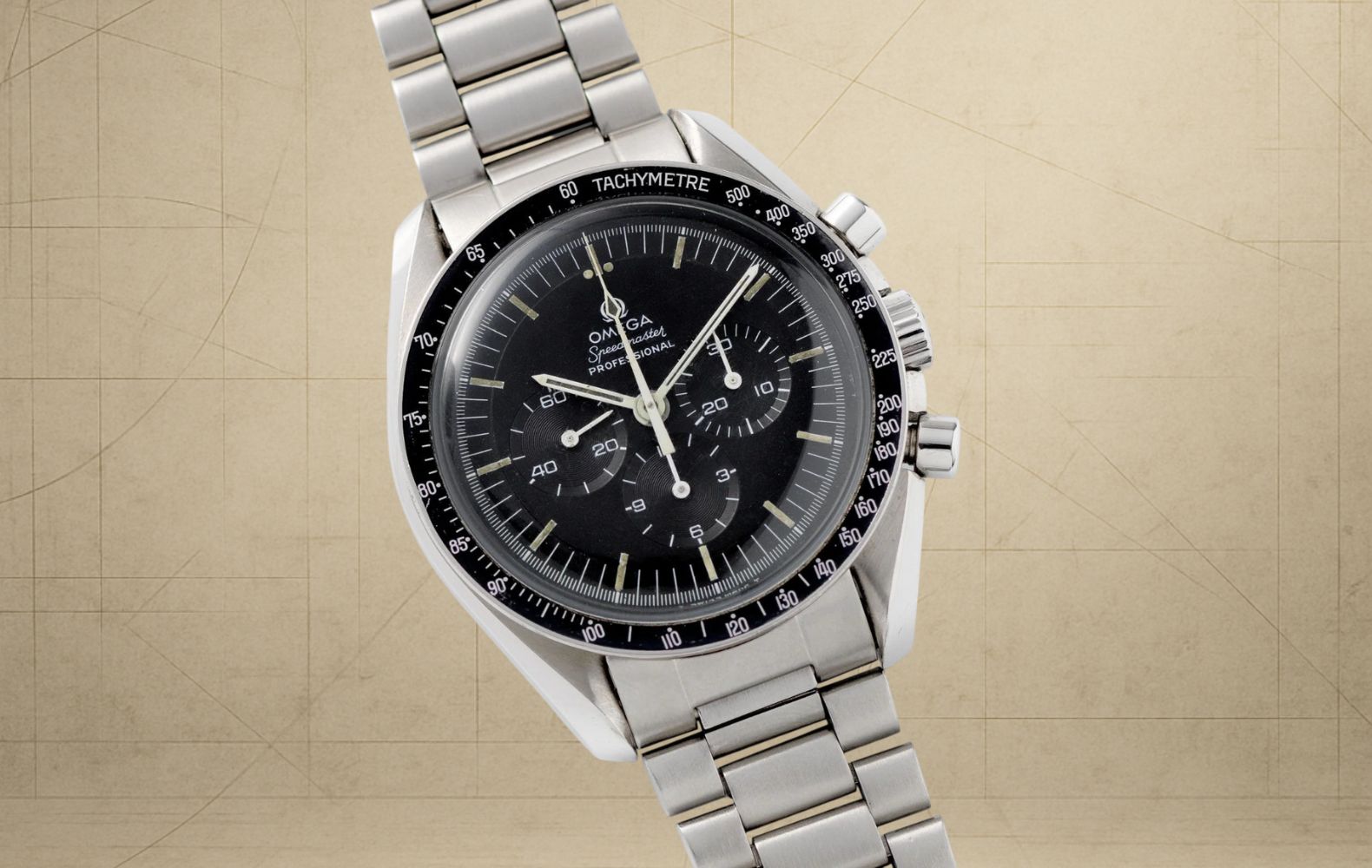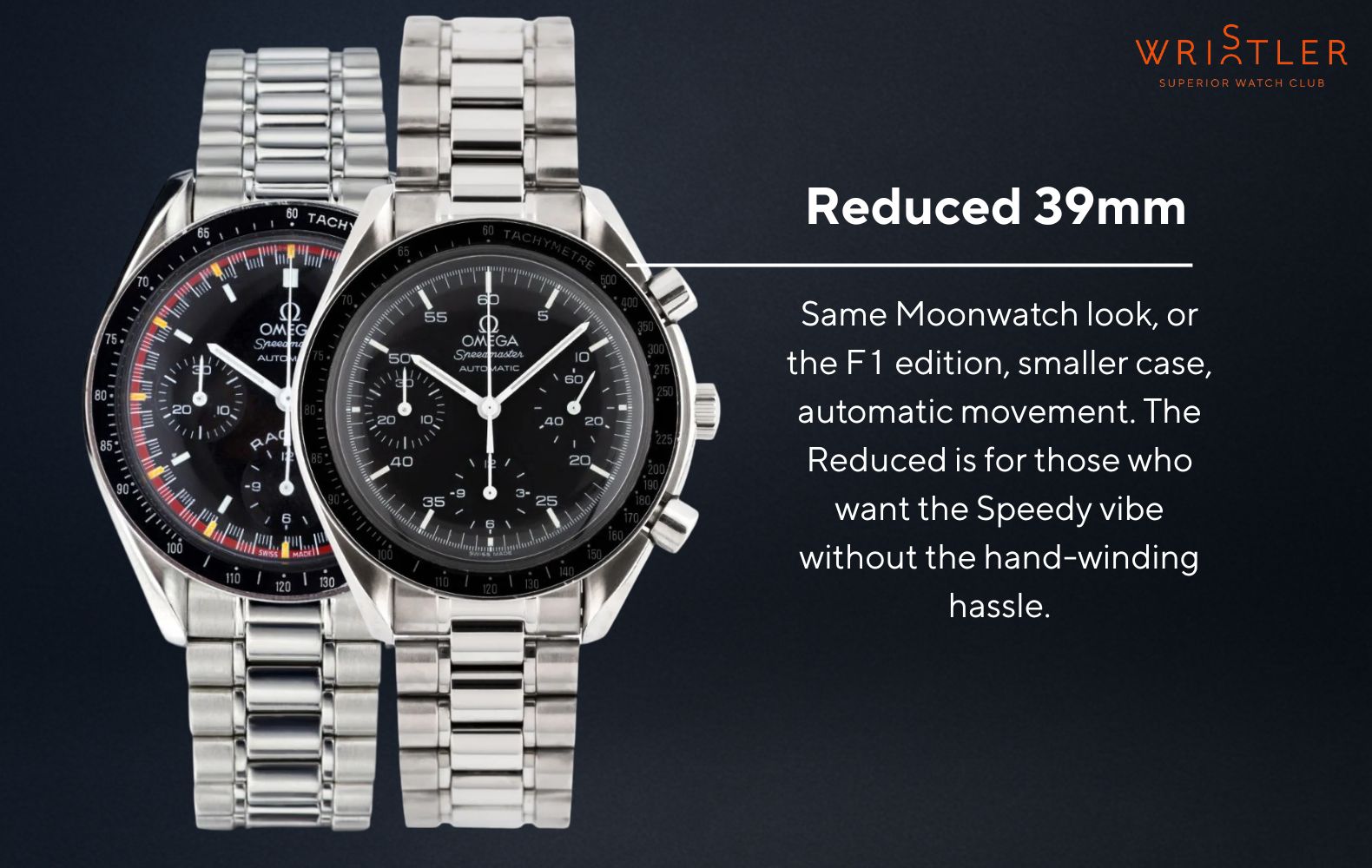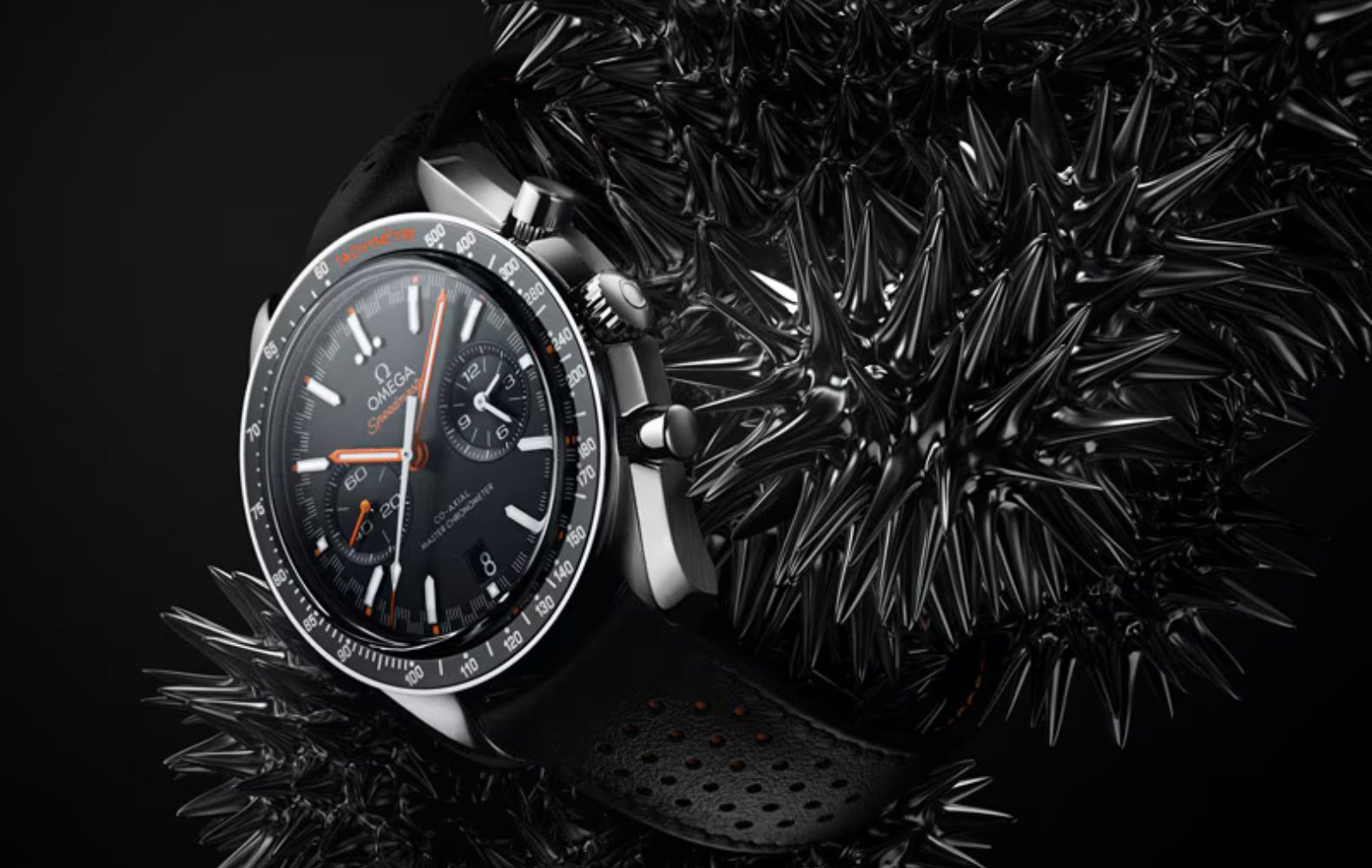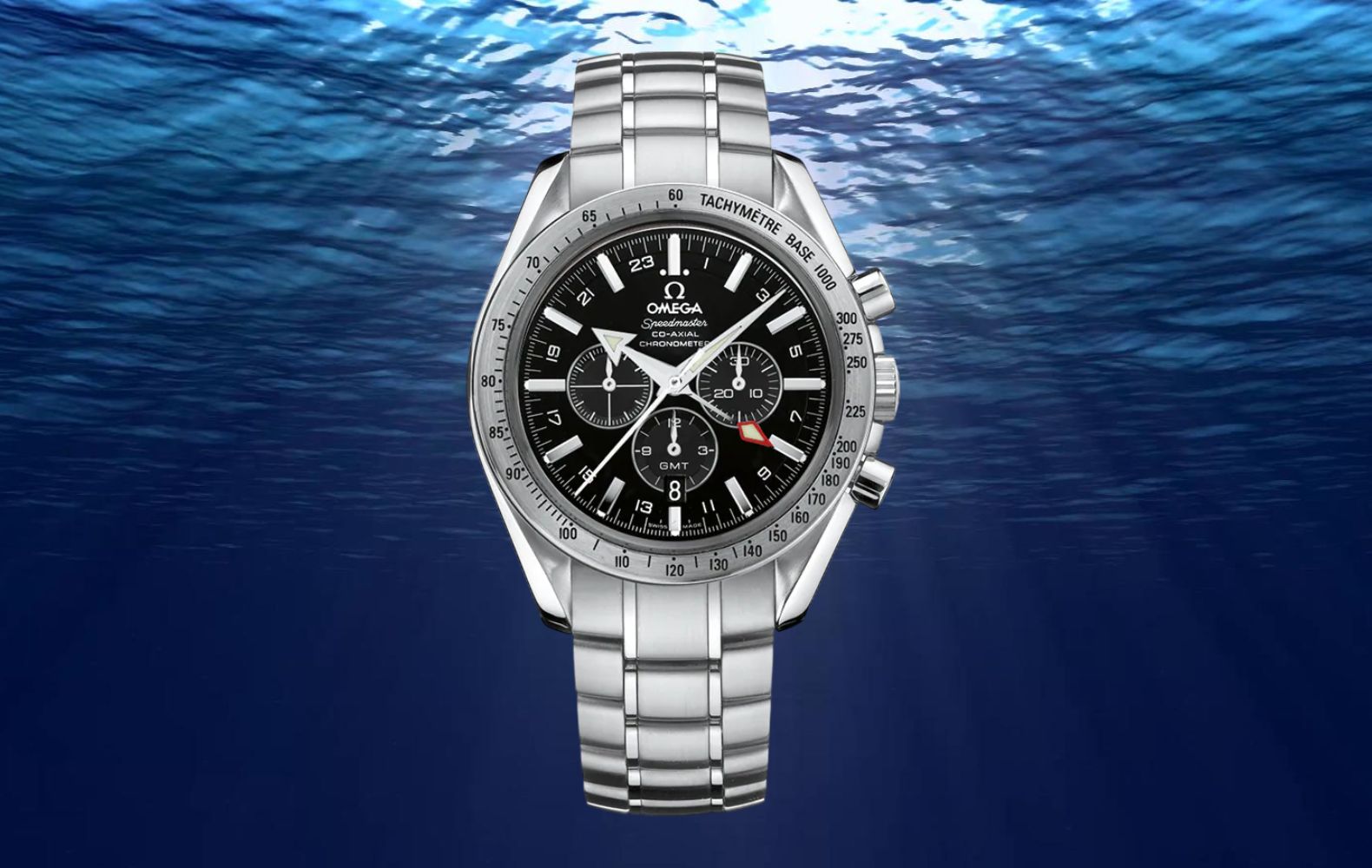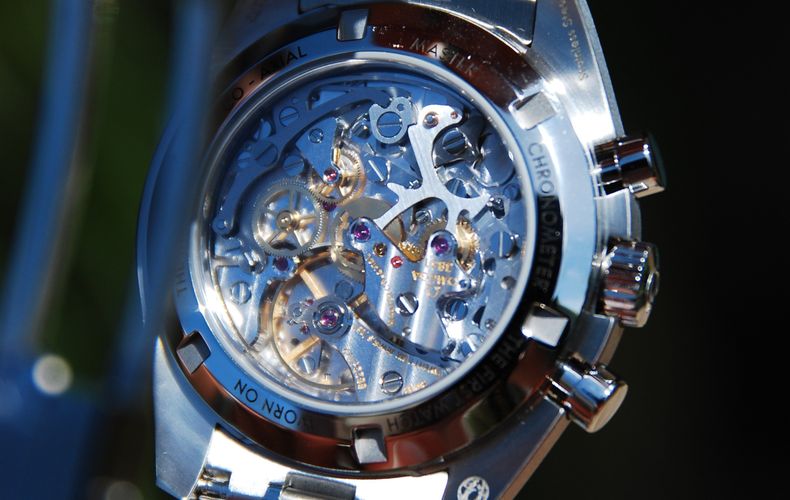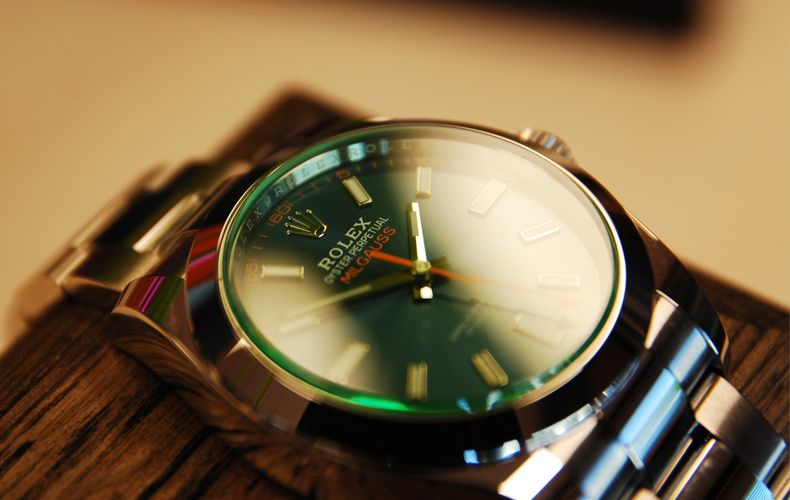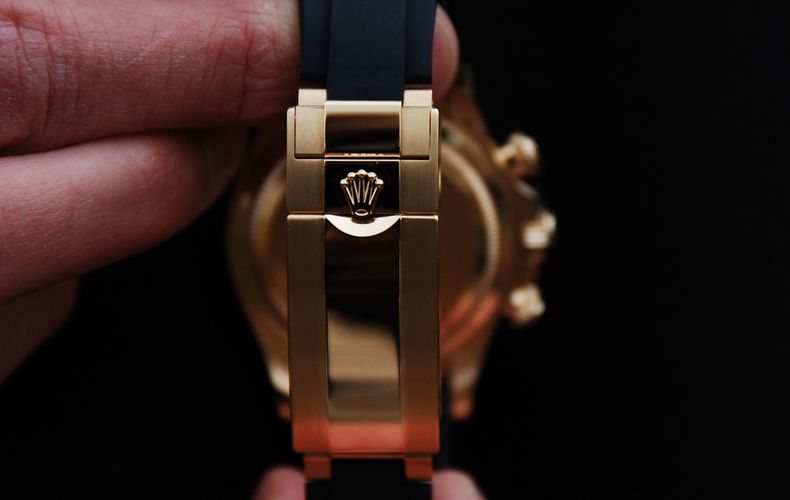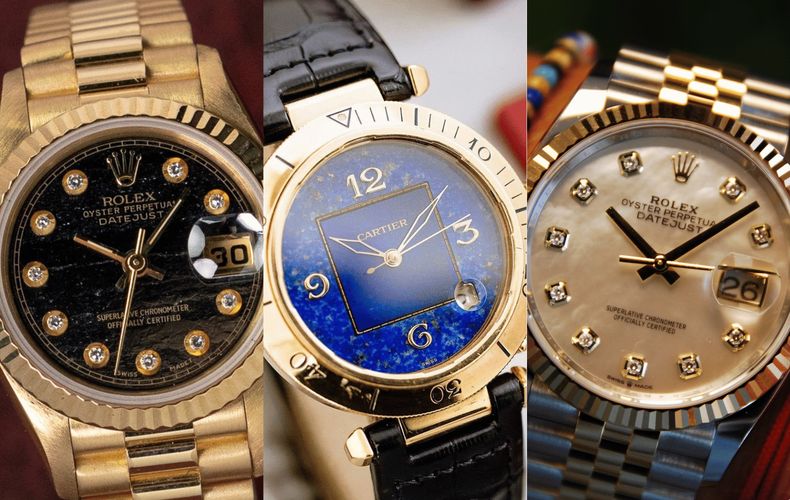Speedmaster Mark Series – 1969 to the 1980s
Let’s be honest, the Mark Series doesn’t get as much love as the Moonwatch or the ’57 reissues. But if you’re into vintage Omegas and aren’t afraid to go off the beaten track, this is a range worth your time. The Mark Series kicked off in 1969, right after the Moon landing, with the Speedmaster Mark II. Omega didn’t just give it a new name, they gave it a new case shape, new dial layout, and a totally different vibe. Gone were the lyre lugs and stepped dials. The Mark II came with a chunky, tonneau-shaped case and a flatter crystal that gave it a more modern, tool-watch look. It still ran on the Caliber 861, the same movement found in the Moonwatch at the time.
Then came the Mark III, Omega’s first automatic Speedmaster, powered by the Caliber 1040. This one took things further: thicker case, integrated bracelet, even more 1970s energy. After that, it got complicated. You had the Mark IV, the Mark 4.5 (an unofficial nickname for the ref. 176.0012 with Caliber 1045), and eventually the Mark V, which wasn’t even sold everywhere. Most of them used some version of the 1040 or 1045 automatic chronograph movements, solid, but heavier and more complex than the hand-wound Moonwatch.
Here’s the thing. These watches were experimental. Omega was trying to update the Speedmaster for a new era. Some of the designs stuck, others didn’t. But as collectors, that’s part of the fun. You get different case shapes, movements, dials, even some rare dial variations that barely show up these days. The Mark II, in particular, has had a quiet comeback in recent years, helped by a modern Co-Axial reissue that stays pretty faithful to the original. Prices? Surprisingly reasonable. You can still pick up a Mark II for somewhere between €2.500 and €4.000, depending on condition. The Mark III, IV, and 4.5 can range from €3.000 to €6.000, while the rarer Mark V tends to sit a bit higher. So if you’re already deep in the Speedmaster world and want something less expected, this is your lane. The Mark Series might not have gone to the Moon, but it’s pure Omega history, and it wears that 1970s charm proudly.






